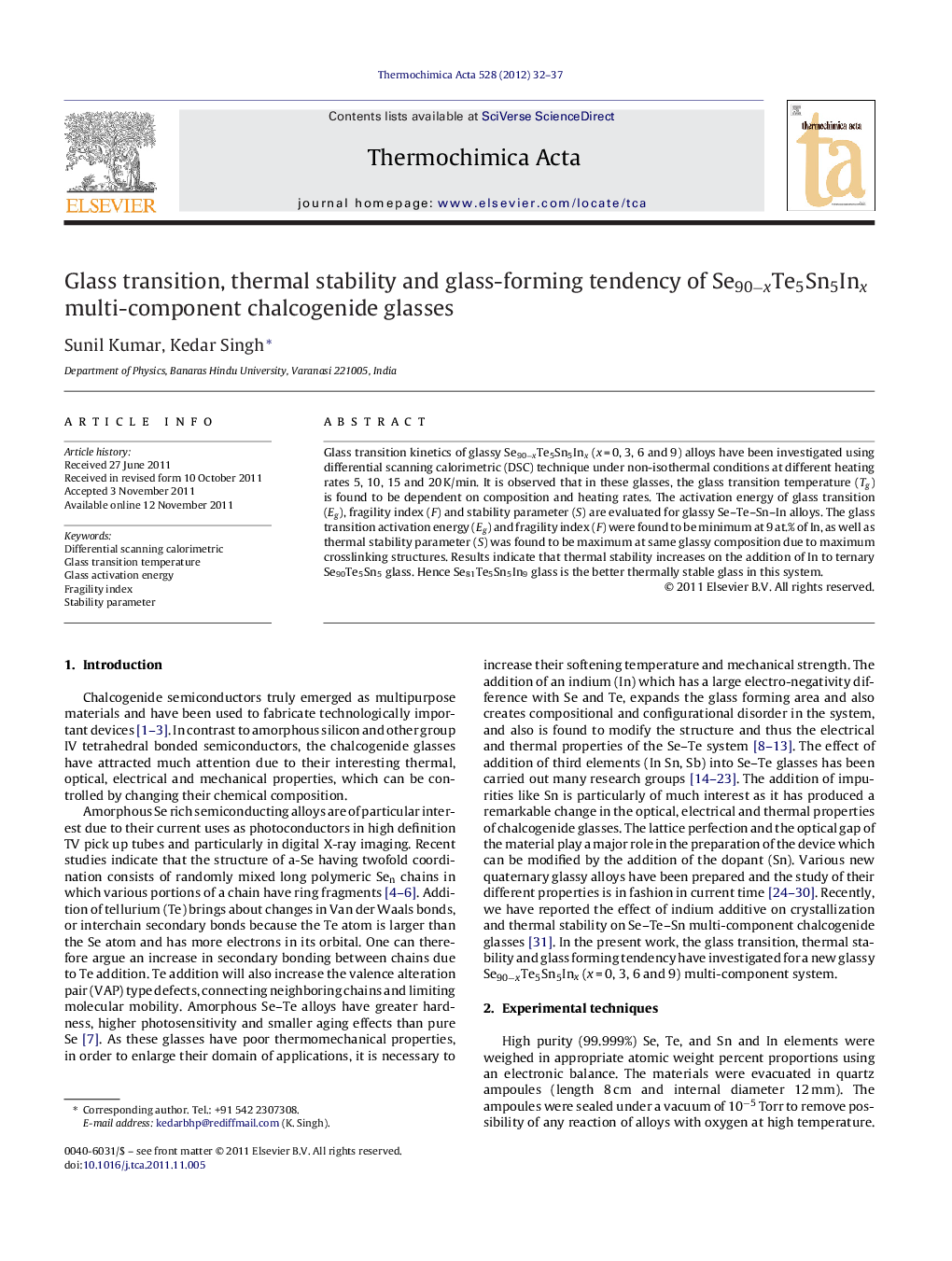| Article ID | Journal | Published Year | Pages | File Type |
|---|---|---|---|---|
| 674338 | Thermochimica Acta | 2012 | 6 Pages |
Glass transition kinetics of glassy Se90−xTe5Sn5Inx (x = 0, 3, 6 and 9) alloys have been investigated using differential scanning calorimetric (DSC) technique under non-isothermal conditions at different heating rates 5, 10, 15 and 20 K/min. It is observed that in these glasses, the glass transition temperature (Tg) is found to be dependent on composition and heating rates. The activation energy of glass transition (Eg), fragility index (F) and stability parameter (S) are evaluated for glassy Se–Te–Sn–In alloys. The glass transition activation energy (Eg) and fragility index (F) were found to be minimum at 9 at.% of In, as well as thermal stability parameter (S) was found to be maximum at same glassy composition due to maximum crosslinking structures. Results indicate that thermal stability increases on the addition of In to ternary Se90Te5Sn5 glass. Hence Se81Te5Sn5In9 glass is the better thermally stable glass in this system.
► Chalcogenide glasses truly emerged as multipurpose materials and have been used to fabricate technologically important solid state devices. ► We have studied calorimetric parameters of glassy Se90−xTe5Sn5Inx (x = 0, 3, 6, 9) alloys using differential scanning calorimetric (DSC) technique under non-isothermal conditions. ► The activation energy of glass transition (Eg), fragility index (F) and stability parameter (S) have been calculated for glassy Se–Te–Sn–In alloys. ► The activation energy of glass transition decreases with the increase of In content. ► The Se81Te5Sn5In9 glass is the most thermally stable glass in this system.
